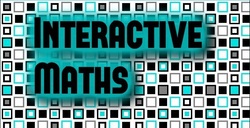Mixed Percentages
The below QuickQuestion Interface © generates 10 random questions on all the topics of percentages. There are less options in this version than the topic specific ones, so if you are practicing only one type, I suggest you use them instead (which can be found here).
Choose which types of questions you would like to include. Set a maximum value, and the type pf percentages you would like to include.
When typing answers, remember to include currency symbols if needed, the % symbol when appropriate, and in overall percentage change questions, indicate increases with a + and decreases with a -.
Choose which types of questions you would like to include. Set a maximum value, and the type pf percentages you would like to include.
When typing answers, remember to include currency symbols if needed, the % symbol when appropriate, and in overall percentage change questions, indicate increases with a + and decreases with a -.
Ideas for Teachers
This is a good alternative to the QQI activity, if you just want to put 10 questions on the board. Then you can get answers from students to enter in the boxes before checking them, and correcting as necessary.
However, the real power in this activity is when you get the students using it themselves. In a computer lesson, set them all going on the activity, and get them to repeat until they get every question correct.
Or you can set it as a homework, telling them the conditions to use (different conditions for different students to differentiate the homework). Then get them to do one or two sets, all correct, and to take a screen shot and either email it to you, or, even better, stick it in their books. Since the questions are random, every student will get a different set of questions, and the immediate feedback means they can go back and correct their work straight away.
This is a good alternative to the QQI activity, if you just want to put 10 questions on the board. Then you can get answers from students to enter in the boxes before checking them, and correcting as necessary.
However, the real power in this activity is when you get the students using it themselves. In a computer lesson, set them all going on the activity, and get them to repeat until they get every question correct.
Or you can set it as a homework, telling them the conditions to use (different conditions for different students to differentiate the homework). Then get them to do one or two sets, all correct, and to take a screen shot and either email it to you, or, even better, stick it in their books. Since the questions are random, every student will get a different set of questions, and the immediate feedback means they can go back and correct their work straight away.
|
If you like the page then tweet the link using the button on the right.
|
|
If you have found interactive-maths.com a useful website, then please support it by making a donation using the button opposite.
|
|
